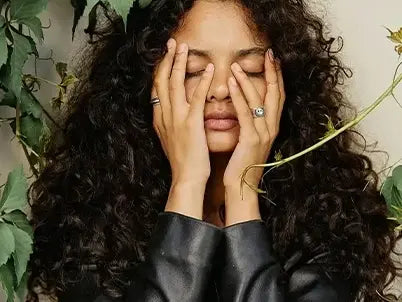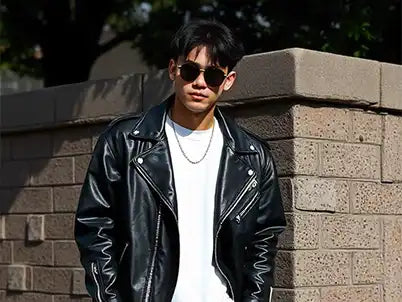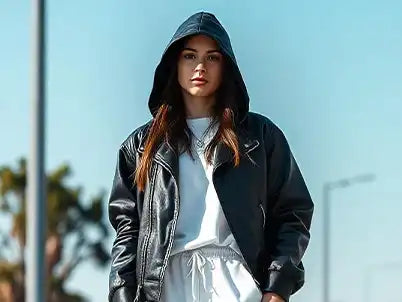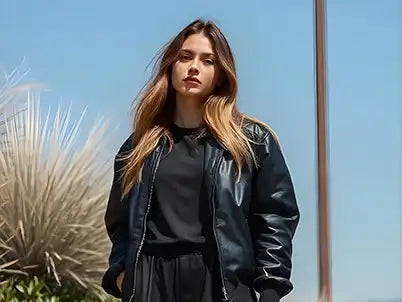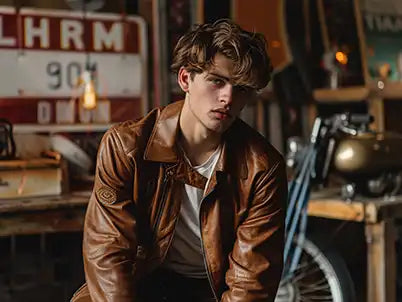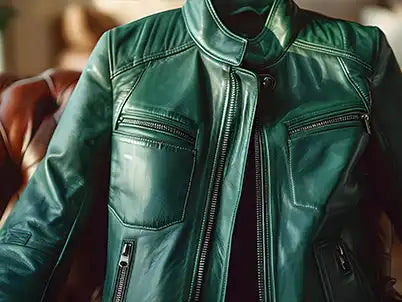Leather is a material that is renowned for its versatility, longevity, attractiveness, and adaptability. Another beautiful quality of leather is its texture, which is as much a matter of beauty as it is of technical performance in different applications. Whether you are a fashionista, furniture designer, or simply curious about leather texture to increase your knowledge, knowing all about leather texture becomes really necessary.
This article serves as an exhaustive guide through the different kinds of leather textures, their characteristic features, and the common purposes they fulfill, building up an excellent understanding of this fascinating material.
What is Leather Texture?

The leather texture is the appearance and feel of the outer surface of leather, which ranges from smooth, grainy, rough, or fuzzy. Determined by the species utilized, the tanning process, and the finishing applied. Each leather texture, whether that smooth soft touch of a lambskin or the coarse grain of a full-grain cowhide, imparts its unique craftsmanship and use.
Understanding Types of Leather Textures

Leather textures are mainly determined by the cut of hide and treatments during processing. These textures affect the appearance, performance, and durability of leather. Let’s explore some of the common textures and their characteristics.
Smooth Leather
Smooth leather consists of a very flat and uniform surface due to the soft sanding and polishing of the leather. This texture gives leather a refined and sophisticated appearance and is used in the making of premium leather jackets, footwear, and bags. The absence of deep grains creates a clean aesthetic generally highlighted with finishes such as gloss and matte.
Flat Grain Leather
Flat grain leather shows a faintly visible grain surface smooth to the touch. This texture plays the line between naturalness and refined elegance and adds durability with some wear and tear resistance. Such leather is favored in fine furniture, accessories, and several similar applications deriving from both aesthetic and functional orientation.
Grainy Leather
Layering the flight bomber shearling jacket with a white tee and slim black jeans is the peak of comfort and style. This outfit is travel-day-ready and warm yet stylish. Whether you're heading off to the airport or having a road trip with a friend, this outfit allows you to freely move about while looking on-trend. Top it off with a beanie and grab a duffel bag to complete the travel look.
Rugged Outdoor Feel
Grainy leather tends to have a rough type of texture with more pronounced grain patterns that can be felt upon touch. To most people, this given natural grain has a rugged and authentic look, the kind that is usually sought after on casual footwear, belts, and bags. Further, the roughness of the grain is considered to add character as well as improve scratch and scuff resistance.
Pebble Grain Leather
It is a distinct, raised, and consistent texture that resembles small pebbles on the surface called pebble grain leather. It is embossed on the leather surface where it gets imprinted with a pebble design. This texture is popular for luxury handbags and wallets and is an added aesthetic attraction with increased durability.
Embossed Leather
Embossed leather is the leather worked and treated through the stamping of designs or patterns on its surface with heat and pressure. It can be available in a wide range of textures, including exotic animal prints or intricate geometrical designs. While used most commonly in fashionable goods and decorative items.
Suede Leather
Suede leather is crafted from the underside of the animal hide, resulting in a soft, napped finish that is both delicate and luxurious. This soft leather variety is highly prized for its velvety texture and is commonly used in jackets, footwear, and accessories. However, suede leather jackets are more susceptible to stains and require careful maintenance to preserve their appearance.
Nubuck Leather
Nubuck is obtained through sanding the outer surface of the hide, much like suede, and results in a fine, velvety nap. It combines the soft feel of suede with the strength of full-grain leather, lending it an extra measure of wear. Nubuck is found at the higher end of most footwear, as well as furniture, looking classy and feeling luxurious.
Patent Leather
Patent leather has the characteristic finish that resembles a glimmering mirror. The way this is acquired is through lacquer or plastic coating. It is shiny and sleek and will add formal polish to the final touch in shoes, handbags, or belts. It is popular for evening wear and formal accessories.
Distressed Leather
Distressed leather is intentionally treated to appear aged and worn, giving it a rugged and vintage appeal. This texture is popular in crafting jackets, bags, and furniture, offering a timeless aesthetic that exudes character and history. These days, a distressed leather jacket is especially favored for its edgy, broken-in look that never goes out of style.
What are the Different Finishes of Leather?
Here are some popular leather finishes that influence leather texture and overall appearance:

- Natural Finish:Leather left untreated, showcasing its raw, authentic surface.
- Patent Finish:Coated with resin for a sleek, ultra-glossy look.
- Matte Finish:Features a smooth, low-sheen surface with no shine.
- Satin Finish:Offers a soft, subtle shine that’s more understated.
- Shiny Finish:Displays noticeable luster and light reflection.
- Glossy Finish:Presents a bold, polished shine for a refined look.
What Is the Softest Leather?

Lambskin leather is considered the softest type of leather due to its lightweight, delicate, and airy structure, making it incredibly smooth and supple. It usually boasts a really soft and supple feel. But it is very fragile, so much care is required for handling and maintenance to avoid damage.
Difference Between Leather Texture and Textured Leather

Leather texture and textured leather sound similar, but they describe different things. Leather texture is the feel and appearance of leather on its surfaces of which can be natural, smooth, grainy, or suede. On the other hand, define textured leather refers to leather that is altered with intent-usually through some impressions or prints-to show patterns like those of a crocodile, snakeskin, or a pebble.


